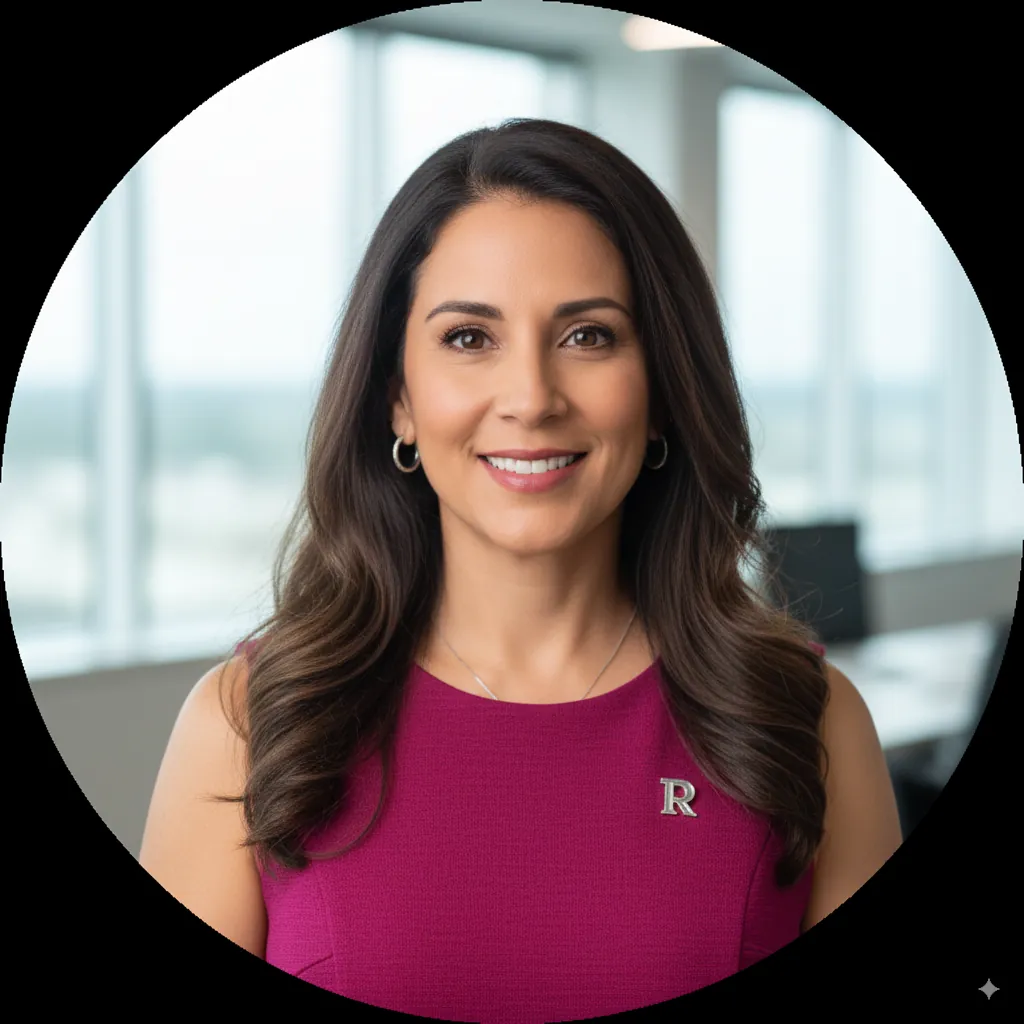Understanding Plastic Surgeon Fees in the U.S.: Key Considerations
When planning for plastic surgery, one of the most crucial factors to consider is the fee structure of plastic surgeons in the U.S. Understanding these costs can help you make informed decisions long before you book an appointment. Plastic surgeon fees can vary significantly due to several factors, including the type of procedure, geographical location, and the surgeon’s experience. Here’s what you should know.
Types of Procedures and Their Associated Costs
Different plastic surgery procedures come with different price tags. Here’s a breakdown of common procedures and their approximate costs:
| Procedure | Average Cost (USD) |
|---|---|
| Breast Augmentation | $3,000 – $10,000 |
| Rhinoplasty (Nose Job) | $5,000 – $15,000 |
| Facelift | $7,000 – $15,000 |
| Abdominoplasty (Tummy Tuck) | $6,000 – $13,000 |
| Liposuction | $2,000 – $7,000 per area |
Keep in mind that these numbers are averages and can vary widely based on various criteria.
Factors Influencing Plastic Surgeon Fees
To fully grasp plastic surgeon fees in the U.S., consider the factors influencing them:
- Surgeon’s Experience: Highly experienced and board-certified surgeons typically charge more for their expertise.
- Geographical Location: Costs tend to be higher in metropolitan areas compared to rural regions. For instance, surgeries in cities like New York or Los Angeles will likely cost more than in smaller towns.
- Facility Fees: The fees of the operating rooms, anesthesia, and other facility-related expenses can add up, affecting the overall price.
- Pre- and Post-Operative Care: Don’t overlook costs associated with consultations, follow-ups, and any necessary medications.
Payment Options and Financing
Plastic surgery is often viewed as an elective procedure, meaning insurances might not cover it. Potential patients should explore various payment options:
- Payment Plans: Many surgeons offer financing options to break down the cost.
- Credit Cards: Some patients use credit cards to manage costs, though be wary of high-interest rates.
- Personal Loans: Applying for a personal loan can be a practical option for covering surgery fees.
Cost vs. Quality
While it’s tempting to choose the cheapest option, consider the old adage: “You get what you pay for.” Selecting a well-reviewed and qualified surgeon may result in higher fees but can lead to better outcomes and fewer complications. Always look for:
- Board certification from the American Board of Plastic Surgery
- In-person consultations and discussions about your needs
- Positive patient testimonials and before-and-after photographs
Research and Find Your Surgeon
To make an empowered decision, research is key. Websites such as American Society of Plastic Surgeons can provide valuable information about board-certified surgeons in your area. Consultations are often free, allowing you to ask questions, discuss fees, and understand what you can expect during and after surgery.
Final Thoughts on Plastic Surgeon Fees
Understanding plastic surgeon fees is essential for anyone contemplating surgery. By considering the procedure type, the surgeon’s experience, geographical location, and potential financing options, you can navigate the costs effectively. Always prioritize safety and quality over price to ensure you achieve the best possible results.
Factors Influencing the Cost of Plastic Surgery
When considering plastic surgery, one of the most significant aspects you’ll need to factor in is the cost. The fees for plastic surgery can vary widely across different procedures and locations. Understanding the various elements that influence these costs will help you prepare for your journey towards transformation. Let’s explore the key factors that affect plastic surgeon fees in the U.S.
Types of Procedures
The nature of the surgical procedure plays a central role in determining the total cost. More complex surgeries, such as rhinoplasty or facelifts, typically have higher fees than minimally invasive procedures like Botox or dermal fillers. Here’s a breakdown of typical costs for common plastic surgery procedures:
| Procedure | Average Cost |
|---|---|
| Rhinoplasty | $5,000 – $15,000 |
| Breast Augmentation | $3,000 – $10,000 |
| Liposuction | $2,000 – $7,500 |
| Tummy Tuck | $6,000 – $12,000 |
| Facelift | $7,000 – $15,000 |
Surgeon’s Expertise
The experience and reputation of the plastic surgeon can significantly impact the fees. Surgeons who are board-certified and have a track record of successful surgeries may charge higher fees due to their expertise. Investing in a skilled surgeon can enhance your safety and the quality of your results.
Geographic Location
Your location plays a crucial role in determining the cost of plastic surgery. Major metropolitan areas, like New York City and Los Angeles, often have higher costs of living, which translates to higher surgical fees. In contrast, smaller cities may offer more affordable prices. Here’s how cost can differ by region:
- East Coast: Higher costs on average due to high demand.
- West Coast: Similar trends as the East Coast with slight variations based on local popularity.
- Midwest: Generally more affordable options compared to coastal cities.
Facility Fees
The environment where the surgery is performed can add to the overall cost. Facilities that are accredited and have state-of-the-art equipment may charge higher fees. These costs contribute to the safety and quality of patient care. Depending on whether your procedure is performed in an outpatient setting or a hospital, facility fees can range from a few hundred to several thousand dollars.
Anesthesia Fees
Another important factor to consider is anesthesia. The type of anesthesia utilized during the procedure—whether local, sedation, or general—can incur additional charges. Anesthesia fees typically range from $500 to $1,500, depending on the duration of the surgery and the type of anesthetic used.
Consultation and Follow-up
Most plastic surgeons charge for initial consultations. This fee usually ranges between $100 and $300, depending on the surgeon’s reputation and location. Post-operative care is crucial for recovery, and costs for follow-up appointments can also add to the overall expenditure.
Insurance Coverage
It’s important to note that many cosmetic surgeries are not covered by insurance. However, if the procedure is deemed medically necessary—such as reconstructive surgery after an injury—insurance may cover some of the costs. Always check with your provider for specifics regarding coverage.
Financing Options
Many clinics offer financing options to help ease the burden of paying for surgery upfront. These plans can allow you to pay in manageable monthly installments. When considering financing, carefully review your payment terms to avoid unexpected costs in the long run.
Being informed about the factors influencing plastic surgeon fees in the U.S. can better prepare you for your journey. If you’re looking for more information on various plastic procedures and their costs, visit The American Society of Plastic Surgeons for detailed resources.
Knowing the factors that influence the cost of plastic surgery, such as the type of procedure, the surgeon’s experience, facility fees, and more, will empower you to make informed decisions. As you navigate this journey, always prioritize your safety and well-being while seeking the results you desire.
The Role of Geographic Location in Pricing
When considering a surgical procedure, you may not realize that geographic location plays a significant role in determining the costs associated with a plastic surgeon. Prices for similar treatments can vary widely depending on where you are in the United States. Understanding these price differences can help you plan your budget and make an informed decision about where to get your surgery.
The cost of plastic surgery often reflects local economic factors, competition among surgeons, and regional demand for specific procedures. Here’s an overview of how these aspects affect your potential expenses:
Economic Factors
The general cost of living in your area can have a substantial impact on plastic surgeon fees. In metropolitan areas where living costs are higher, such as New York City or Los Angeles, you can expect to pay more for surgical procedures. Here are some examples of how costs may differ:
- In urban centers, overhead expenses for a surgeon’s practice, such as rent, salaries, and supplies, tend to be higher.
- In contrast, surgeons in rural areas or smaller cities may have lower operational costs, making their fees more affordable.
Competition Levels
Another key element is the level of competition among plastic surgeons in any given area. In regions with many qualified surgeons, prices can be driven down due to competition. Conversely, in locations where there are fewer qualified practitioners, surgeons may charge more. Here’s how this plays out:
- In a city with several plastic surgeons offering similar services, you may find competitive pricing.
- However, if you’re in an area with limited access to quality practitioners, you may pay a premium for your procedure.
Regional Demand
Demand for specific plastic surgeries can also vary by region. Trends in cosmetic procedures often influence surgeon fees. For example:
- In some areas, certain procedures like breast augmentations or liposuctions may be especially popular, leading to an increase in prices due to high demand.
- In contrast, less trendy surgeries may be more reasonably priced, as surgeons compete for patients.
Procedure Pricing Overview
It’s essential to know the typical costs associated with popular plastic surgeries, as they can fluctuate based on geographic location. Here’s a table representing average costs across various U.S. cities:
| Procedure | New York City | Miami | Chicago | Los Angeles |
|---|---|---|---|---|
| Rhinoplasty | $12,000 | $9,500 | $10,000 | $11,500 |
| Breast Augmentation | $15,000 | $10,000 | $11,000 | $13,500 |
| Tummy Tuck | $14,000 | $11,000 | $12,500 | $13,000 |
As you can see, costs can vary significantly, making it necessary to research your specific area before deciding on a surgeon.
Hidden Costs
In addition to the surgeon’s fees, other expenses may arise depending on your geographic location. Some costs to consider include:
- Anesthesia fees can vary, with urban areas often charging more due to higher costs associated with staffing.
- Facility fees are often greater in metropolitan hospitals, while outpatient surgery centers may offer lower rates.
- Travel and accommodation costs if you decide to seek surgery in a different city.
When budgeting for your surgery, it’s crucial to factor in these potential additional costs.
To navigate this pricing landscape effectively, consider consulting trusted sources for average costs, such as the American Society of Plastic Surgeons. Understanding the financial implications of geographic factors can empower you to make better decisions regarding your plastic surgery journey.
Whether you live in a big city or a smaller town, knowing how geography impacts plastic surgeon fees will guide you in planning your surgery expenses and choosing the best provider tailored to your budget and needs.
How Experience and Credentials Affect Fees
When it comes to plastic surgeon fees in the U.S., one of the most significant factors influencing costs is the surgeon’s level of experience and credentials. Understanding how these elements impact the fees can better prepare you for what to expect as you plan your surgery.
Surgeons with advanced credentials and extensive experience often command higher fees due to their proven skills and the quality of care they offer. Here’s a breakdown of how experience and credentials can affect plastic surgeon fees:
Experience Matters
Experience plays a vital role in determining a plastic surgeon’s fees. A surgeon who has performed thousands of procedures will typically charge more than one who is just starting. This is not just about volume but also about the skill set gained through years of practice. Look at the following points:
- Years in Practice: A surgeon with 10+ years of experience may charge higher fees compared to a newer practitioner. Their track record often leads to higher demand.
- Number of Procedures: A surgeon who focuses on a specific type of surgery, such as facelifts or breast augmentations, will likely have a higher price point due to their specialization.
- Complication Rates: Experienced surgeons tend to have lower complication rates, which can impact the levels of trust patients have in them and the resultant pricing.
Credentials and Certifications
Surgeons who possess reputable certifications, such as being board-certified by the American Board of Plastic Surgery, often charge more for their services. Credentials can affect fees in multiple ways:
- Board Certification: Surgeons certified by recognized boards have undergone rigorous training and evaluations, justifying higher fees due to their advanced qualifications.
- Fellowships and Special Training: Additional fellowship training in specialized areas can indicate a higher level of expertise, often reflected in the pricing of their services.
- Awards and Recognitions: Awards from professional organizations can enhance a surgeon’s reputation and lead to increased demand, setting a precedent for higher fees.
Location Influences Pricing
The geographic location of a plastic surgery practice can also impact fees. In larger metropolitan areas, where the cost of living is higher, you will generally find elevated prices. The same service may cost less in smaller towns or rural areas. Here’s how location can play a role:
- Cost of Living: Surgeons in big cities often have higher overhead costs which translates to higher fees.
- Market Demand: In areas with a greater number of specialists, competition might help keep prices lower.
- Insurance Coverage: Some locations may have different policies regarding what is covered, impacting the out-of-pocket costs for patients.
Understanding the Investment
While higher fees may seem daunting, they can often be an investment in your health and self-esteem. It’s important to consider the following:
- Quality of Care: Higher fees often reflect a higher standard of care, better results, and lower chances of complications.
- Post-Operative Care: Surgeons with experience typically provide comprehensive post-operative care, which can lead to faster recovery times and better outcomes.
- Patient Satisfaction: Established surgeons often have a record of satisfied patients, which is a crucial aspect when deciding who to trust for surgery.
Understanding how experience and credentials affect plastic surgeon fees can help you make informed choices when considering surgery. Always research potential surgeons thoroughly, checking their experience and results.
For detailed comparisons of procedures and fees, you might want to visit the American Society of Plastic Surgeons. Another great resource is RealSelf, where you can find reviews and real patient experiences.
By considering these factors, you’re more equipped to navigate the costs associated with plastic surgery, ensuring that you find a qualified surgeon who meets your needs without compromising on quality.
Typical Payment Models for Plastic Surgery Services
When considering plastic surgery, understanding the typical payment models can help you budget effectively and make informed decisions about your procedure. Costs can vary widely depending on several factors, including the type of surgery, the surgeon’s experience, and the geographical location. Here, we will explore the common payment models associated with plastic surgery services.
Out-of-Pocket Payments
Most plastic surgeries, especially aesthetic procedures, are typically not covered by insurance, meaning you’ll need to pay directly out-of-pocket. This model requires you to pay the full amount upfront or through financing options. Here’s what you might expect:
- Initial Consultation Fee: Many surgeons charge a fee for the initial consultation, which can range from $100 to $500.
- Surgery Fees: Depending on the procedure, these could range from a couple of thousand dollars to tens of thousands (e.g., rhinoplasty might cost $5,000 to $10,000, while a tummy tuck can range from $8,000 to $15,000).
- Anesthesia and Facility Fees: This could add an additional $500 to $3,000 to your total cost, depending on the complexity of the procedure.
Financing Options
If paying out-of-pocket feels overwhelming, financing options are often available through your plastic surgeon’s office or third-party medical financing companies. Here are some key points about financing:
- Flexible Payment Plans: Many clinics offer monthly payment plans that allow you to spread the cost over time.
- Low-Interest Rates: Some financing models come with low-interest rates, making it affordable to manage expenses.
- No Credit Check Options: Certain lenders might not require a traditional credit check, allowing easier access to financing.
Insurance Coverage
For reconstructive plastic surgery, such as post-trauma procedures or surgeries aimed at correcting congenital defects, insurance might cover some costs. Here’s how it often works:
- Pre-Authorization: Before proceeding, you generally need pre-authorization from your insurance provider.
- Documentation Required: You may be required to provide documentation proving the necessity of the surgery.
- Patient Responsibility: Even with coverage, be prepared for potential out-of-pocket expenses due to deductibles or co-pays.
Cash Discounts
Some plastic surgeons may offer discounts for cash payments. Paying in cash can eliminate credit card processing fees or add-on charges, making it a cost-effective option. Here are some points to consider:
- Discount Rates: Some clinics may provide a discount of 5% to 15% for cash transactions.
- Negotiation: Don’t hesitate to discuss discounts with your surgeon or office manager; they may be willing to negotiate.
Comparison of Typical Costs by Procedure
| Procedure | Typical Cost Range | Insurance Coverage |
|---|---|---|
| Rhinoplasty | $5,000 – $10,000 | Varies (may cover if medically necessary) |
| Breast Augmentation | $6,000 – $13,000 | Not typically covered |
| Tummy Tuck | $8,000 – $15,000 | Varies (may cover in specific cases) |
| Facelift | $7,000 – $15,000 | Not typically covered |
As you consider undergoing plastic surgery, it’s essential to discuss payment models with your chosen plastic surgeon. Asking about their payment structure, financing options, and potential discounts can open pathways for affordability. Remember, investing in your health and well-being is paramount, and understanding these financial aspects will help you feel more secure in your decision.
For more detailed information about plastic surgery financing and options, you can explore resources like The American Society of Plastic Surgeons or CareCredit.
Hidden Costs: What You Need to Know Before Surgery
Before you undergo surgery, it’s essential to understand not just the main costs but also the hidden fees that can significantly impact your overall financial liability. Many patients focus solely on surgery fees, but there are often additional costs that can catch you off guard. Here’s a breakdown of what you should consider before going under the knife.
Pre-operative Costs
Your journey often begins with consultations, lab tests, and imaging studies. These expenses sometimes get overlooked during budgeting.
- Consultation Fees: Surgeons typically charge for the initial consultation. This fee varies widely, from $100 to $500, depending on the surgeon’s expertise and reputation.
- Medical Tests: Blood tests, X-rays, or MRIs could be necessary to ensure you are fit for surgery. Testing costs can range from $50 to several hundred dollars.
- Anesthesia Evaluation: An anesthesiologist may want to evaluate your health before surgery, which could add another $200 to $300 to your costs.
Operating Room Fees
Another hidden cost arises from the use of the operating room itself. The price can significantly inflate your total bill.
- Facility Fees: Hospitals or surgery centers often charge facility fees that cover the use of their operating room. Expect these fees to be between $1,000 to $5,000 based on the complexity of the procedure and the location.
- Overtime Charges: If your procedure runs longer than expected, additional hourly charges may accrue, which can range from $100 to $300 per hour.
Post-operative Costs
After your surgery, you may encounter various costs that are essential to your recovery. Ignoring these can result in unexpected financial strain.
- Medications: Prescription pain relievers and antibiotics can add up, costing anywhere from $20 to $200.
- Follow-up Visits: Post-operative check-ups are crucial for your healing process. These visits can cost between $100 to $300 each, depending on the surgeon.
- Rehabilitation: Some surgeries require physical therapy, which might put an additional load on your budget. Sessions can range from $50 to $200 each.
Insurance Considerations
It’s crucial to check what your insurance will cover. Many insurance plans do not cover elective surgeries or certain associated costs.
- Deductibles: Before your insurance kicks in, you may be responsible for a deductible, which can be anywhere from $500 to $5,000.
- Co-pays: Insured patients may still be required to pay co-pays for each visit or service, including pre-operative tests.
- Out-of-Pocket Maximums: Be aware of your out-of-pocket maximum limit, as expenses can quickly add up before you hit your limit.
Additional Hidden Costs
Beyond the surgery itself, various other expenses might also emerge.
- Travel Expenses: If you need to travel to a different city or state for surgery, include travel and accommodation costs in your budget.
- Time Off Work: Surgery may require time off work. Factor in any lost income, as this can significantly affect your financial situation.
- Home Care Services: Depending on the type of surgery, you may need professional help, which could range from $25 to $75 per hour.
To avoid being surprised by these costs, ask your surgeon and medical facilities for a detailed breakdown of all potential fees. This transparency will help you to accurately plan your budget.
For more information about understanding surgical costs and insurance considerations, you can visit The American Society of Plastic Surgeons or Nipntuck.com.
By understanding these hidden costs associated with surgery, you can make more informed choices, ensuring that you are financially prepared for your medical journey.
Insurance Coverage and Financing Options for Plastic Surgery
When considering plastic surgery, understanding the financial aspects is crucial. Many prospective patients often ask about insurance coverage and financing options available for these types of procedures. This information can significantly impact your decision-making process, so let’s explore what you should know.
Insurance Coverage for Plastic Surgery
Insurance coverage for plastic surgery varies widely. Generally, most health insurance plans will only cover procedures deemed medically necessary. This usually includes surgeries for reconstructive purposes, such as:
- Breast reconstruction after mastectomy
- Repair of congenital defects (like cleft lip or palate)
- Reconstructive surgery following trauma or burns
Cosmetic procedures, however, are typically not covered by insurance. These include operations like facelifts, breast augmentation, or liposuction. When planning your surgery, it’s important to check with your insurance provider to see what is and isn’t covered. You should also confirm if the plastic surgeon you are considering is in-network to avoid unexpected expenses.
Getting Pre-Approval
If you’re considering a reconstructive procedure, obtaining pre-approval from your insurance company might be required. This typically involves:
- Submitting detailed medical records.
- Getting a letter of medical necessity from your surgeon.
- Ensuring that all pre-operative guidelines are met.
Pre-approval isn’t always guaranteed, so it’s vital to have a thorough understanding of your policy before going into the process.
Financing Options for Plastic Surgery
If your procedure isn’t covered by insurance, exploring financing options can help make your desired surgery more affordable. Here are a few common financing options:
- Payment Plans: Many plastic surgeons offer their own financing plans, allowing you to spread out the cost over several months.
- Medical Credit Cards: Companies like CareCredit and Prosper Healthcare Lending specialize in healthcare financing, offering interest-free periods if paid in full within a set time frame.
- Personal Loans: Another option is to take out a personal loan that can cover your surgery costs. Compare interest rates and loan terms to find the best fit.
- Home Equity Line of Credit (HELOC): If you own a home, this can be a cost-effective way to finance your surgery, provided you feel comfortable using your home’s equity.
Assessing Total Costs
Cost can vary significantly depending on the type of procedure, location, and the surgeon’s experience. Typically, you should consider:
| Procedure | Average Cost | Insurance Coverage |
|---|---|---|
| Breast Augmentation | $6,000 – $12,000 | No |
| Rhinoplasty | $5,000 – $10,000 | No (unless for medical reasons) |
| Facelift | $7,000 – $15,000 | No |
| Breast Reconstruction | $10,000 – $50,000 | Yes (if medically necessary) |
Always ask for a detailed breakdown of costs from your surgeon. This should include fees for the surgeon, anesthesiologist, facility, and any post-operative care. Understanding the total costs and possible financing options ahead of time can reduce anxiety and help you strategize your budget.
Resources for Further Assistance
If you need more information regarding insurance coverage and financing options for plastic surgery, consider visiting [American Society of Plastic Surgeons](https://www.plasticsurgery.org/) and [CareCredit](https://www.carecredit.com/) for resources and tools that can help you navigate your financial decisions.
Understanding insurance coverage and available financing options can empower you to make informed decisions about your plastic surgery journey. By being prepared and informed, you can focus on the benefits that the procedure offers rather than the financial stress associated with it.
Key Takeaway:
When it comes to understanding plastic surgeon fees in the U.S., there are several key considerations to keep in mind before deciding on a procedure. First and foremost, it’s essential to recognize that the cost of plastic surgery can vary greatly depending on multiple factors. These include the type of surgery you are considering, the surgeon’s experience and credentials, and the location of the practice.
Geographic location plays a significant role in pricing. For instance, plastic surgery procedures in metropolitan areas tend to be more expensive compared to those in rural locations. This is often due to higher living costs and demand for services in cities. Additionally, the surgeon’s expertise can significantly influence fees. More experienced plastic surgeons with a strong track record in specific procedures often charge higher rates because of their skill and reputation. It is wise to balance cost with the qualifications and experience of the surgeon.
Another important aspect to consider is the typical payment models used in plastic surgery. Most procedures are paid for out-of-pocket because they are often considered elective and may not be covered by insurance. However, it is crucial to check with your insurance provider for any potential coverage options or reimbursement for specific circumstances.
In the realm of plastic surgery, hidden costs can sneak up on patients. These might include pre-operative consultations, anesthesia fees, and post-operative care, which can add thousands to the base price. Therefore, it’s vital to have an open conversation with your surgeon about all potential costs involved in the process.
Be aware of financing options available for those who need assistance in managing the costs of their plastic surgery. Many practices offer payment plans or partner with financing companies to help make procedures more accessible.
Understanding plastic surgeon fees involves considering various factors, including the procedure’s specifics, surgeon expertise, location, payment models, potential hidden costs, and available financing options. Being well-informed can help you make the best decision for your needs and set realistic expectations for the financial commitment involved.
Conclusion
Navigating the world of plastic surgeon fees in the U.S. can feel overwhelming, but understanding the components involved makes the journey clearer. It’s essential to consider various factors that influence the costs, including the complexity of the procedure, the surgeon’s experience, and the geographic location of the practice. Each of these elements can significantly impact overall pricing, so diligent research is vital.
Experience and credentials are key players in determining fees. Established surgeons with advanced training may charge more, but their expertise can lead to safer outcomes and improved results. Knowing this can guide your decision when choosing a surgeon.
Payment models typically vary, and it’s crucial to discuss these details ahead of time. Some practices offer financing options to aid in managing costs, making the procedures more accessible. However, it’s also wise to be aware of potential hidden costs, such as anesthesia fees or facility charges, which can add to the final bill.
Many patients mistakenly believe that their insurance will cover cosmetic procedures, but it’s essential to understand the limits of insurance coverage in this area. When consulting with your surgeon, discuss available financing options and be sure to clarify what your insurance may or may not cover.
Ultimately, being informed about plastic surgeon fees in the U.S. enables you to make choices that are not only financially sound but also safe and satisfying. Taking the time to consider all these factors will better prepare you for your journey in plastic surgery while ensuring peace of mind as you step into this transformative process.





Leave a Reply